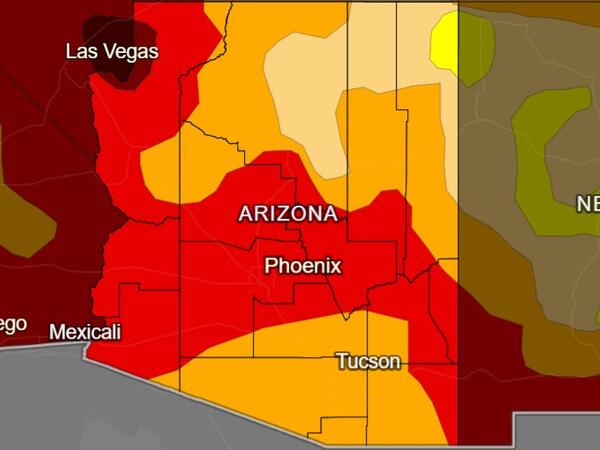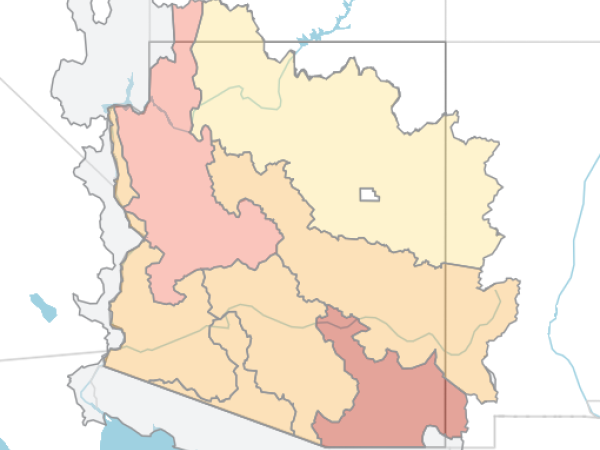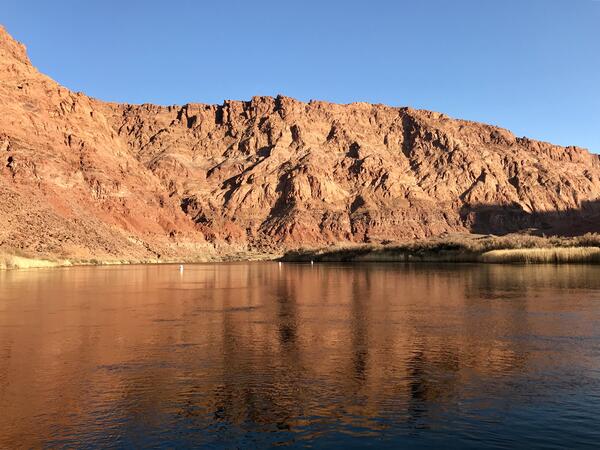Drought is a prolonged period of below-average precipitation severe enough to negatively impact the environment and human activities. Drought is a natural occurrence and Arizona is especially sensitive to drought, since water is scarce here even during average years. Population growth continues to increase demand for water. Drought can impact domestic water supplies, ranching and farming production, vegetation, forest health and wildlife populations.
Arizona has been in some stage of drought since 1994, according to statewide precipitation patterns. Water resources in Arizona are diverse and can arrive from hundreds of miles away; such is the case with the Colorado River water. Water in the Colorado River are generated by snowmelt runoff from mountain ranges that can be located in as far as Colorado and Wyoming states, upper in the Colorado River Basin. Even water supplies that are generated within the state can originate much further than the place of consumption- either located deep underground (in the form of groundwater) or generated by snowmelt from mountains located tens of miles away from Central Arizona, where most of the state's residents live and work. Learn more.
While climate change is affecting the entire state, the impacts are felt differently depending on where and who you are. Experts are most concerned about parts of the state that are largely reliant on a single resource like the Colorado River, which is currently experiencing a megadrought, or only groundwater. We should be paying the most attention to the strategies we need to manage risk in those areas. Marginalized populations experiencing water insecurity emphasized by climate change include low-income families, migrant workers, minority-headed households, houseless people, and tribal populations.
For example, across the Navajo Nation, lack of access to potable water is common, and that access is hindered by water infrastructure costs, which can be as much as 70 times higher for a Navajo family relying on hauled water than for non-Indigenous families with piped delivery, according to the report.
The state of Arizona is working on a Priority Climate Action Plan, led by the Governor’s Office of Resiliency. Simultaneously, two climate plans are being developed by Maricopa and Pima counties. Cities including Phoenix, Tucson and Flagstaff are also working on plans. There is need to advance water augmentation opportunities, water purification, and different cooperative agreements between cities and agricultural users, other states, and with tribal communities to be able to increase the available supply from the Colorado River.
ASU is supporting the City of Phoenix and regional partners as they develop a new advanced water purification treatment plant that will allow the recycling of municipal wastewater to drinking water quality standards, and deliver that water directly back to residents. This will generate tens of millions of gallons of new water every day reduce our reliance on drought-affected rivers like the Colorado River and allow us to be more efficient and reuse and recycle our water multiple times.
Tools

Groundwater Depletion in the Colorado River Basin
The Colorado River Basin is not just losing surface water. NASA satellites show how the Basin’s groundwater is vanishing, too.

National Drought Monitor: Arizona
The U.S. Drought Monitor depicts the location and intensity of drought across the country and is updated weekly. The map is jointly produced by the National Oceanic and Atmospheric Administration, U.S.…

Arizona Water Chatbot
Arizona Water Chatbot is your Grand Canyon State water pal. Learn about drought, water conservation, and creative ways to protect our desert oasis's vital resource. Together, we can improve Arizona's water future!…
Fact sheets
Research and policy briefs

Research brief: Declining freshwater availability in the Colorado River Basin threatens sustainability of its critical groundwater supplies
The Colorado River Basin, a crucial water source for several U.S. states and Mexico, is facing a severe and ongoing decrease in freshwater – both surface and groundwater. This decline is mainly due to the changing…

Arizona monthly climate reports
At the end of each month, the weather for that month is summarized in a publication from the Arizona State Climatologist office at ASU. It includes a narrative of the weather events across the state, graphs and maps…

National Climate Assessment Southwest Chapter
Climate change is threatening water resources, increasing challenges to food and fiber production, and compromising human health in the Southwest through drought, wildfire, intense precipitation, sea level rise, and…
Newsletters
Interested in keeping up with our events, news, and resources? Sign up for our newsletter today!
Sign up